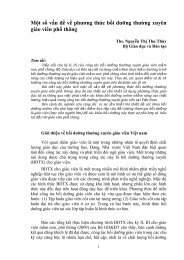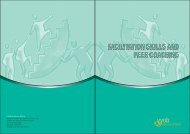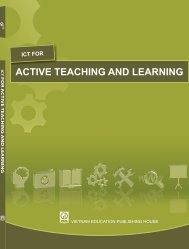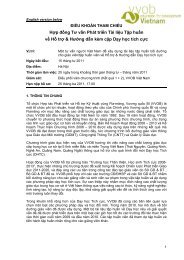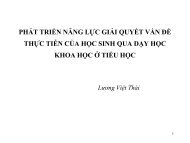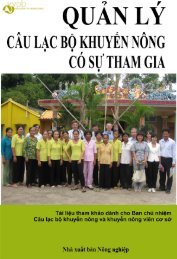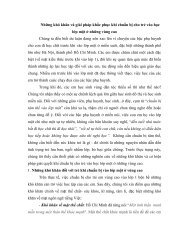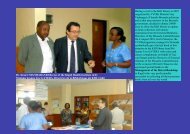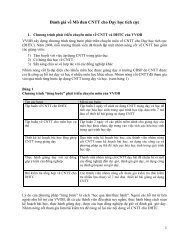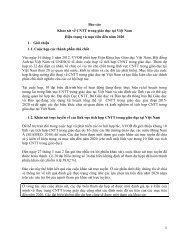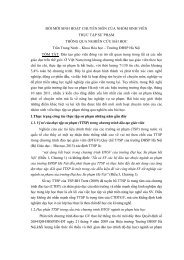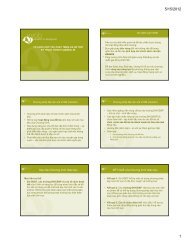Kenya Multi-Year Programme 2011-2013 - VVOB
Kenya Multi-Year Programme 2011-2013 - VVOB
Kenya Multi-Year Programme 2011-2013 - VVOB
- No tags were found...
You also want an ePaper? Increase the reach of your titles
YUMPU automatically turns print PDFs into web optimized ePapers that Google loves.
2.1.2. Good governance<strong>Kenya</strong> has a mixed record on governance 10 . In comparison to its peers, it scores well on voiceaccountability, regulatory quality, revenue mobilizations, public administration, macroeconomic andbudgetary management. By contrast, it scores well below the norm for lower-income countries andsub-Sahara Africa on rule of law and control of corruption.Development is made possible through proper management. The Government makes efforts withrespect to good governance and aims to meet the national strategic objectives with the availablemeans. Recent national budgets (since financial year July 07- June 08) are planning prudently byexcluding external bilateral budget support from the fiscal framework. Only grants and loans are beingincluded (app. 5% of the budget). Since the review of the Medium Term Expenditure Framework(MTEF) process, in 2004, the government has made progress on making the budget process moretransparant and participative. Various reporting mechanisms such as the Public Expenditure TrackingSurveys (PETS) 11 are being implemented.De <strong>Kenya</strong> Anti Corruption Commission is operational, and recent Budget Outlook Papers (e.g.2007/08) promised the implementation of a mid-term anti-corruption strategy (with SMART indicators).In reality, it still appears that there is insufficient goodwill at the highest levels, because seniorpoliticians are personally involved. In 2009, several big scandals (eg maize procurement, illegal sale ofcemetary land in Nairobi, misappropriation of 103 million Ksh in the Ministry of Education) wereuncovered. Although some officers involved were suspended or taken to court, so far no-one has beensentenced.Generally, the government is adopting a more communicative attitude, sharing more information withthe public. This happens through publications in the press and through government websites(http://www.kenya.go.ke). Use of e-mail in communication with and within government has increasedover the past few years. The government has adopted a Result Based Management approach andcivil servants (of middle and senior level) sign annual ―performance contracts‖.2.2. The process of ownership and donor coordinationThe <strong>Kenya</strong> government has embraced the Sector Wide Approach to <strong>Programme</strong> Planning (SWAP).The first such a plan (selected in line with the priorities of the economic development plans of the time)was the <strong>Kenya</strong> Education Sector Support <strong>Programme</strong> 2005-2010 (KESSP, July 2005).The sector wide plan for Health was finalised at the end of 2006 and used many of the lessonslearned from the education sector to improve the process. Besides sectorwide programmes, <strong>Kenya</strong>also has more limited sector plans, e.g on Justice, Governance Law & Order Sector (JGLOS). All ofthese sector plans are important instruments in the collaboration between the <strong>Kenya</strong> Government andthe development partners. Each sector has platforms or sector groups for consultation andcoordination, monitoring and evaluation. All bi-lateral countries harmonize efforts under the <strong>Kenya</strong>Joint Assistance framework (KJAS - www.hackenya.org) to operationalise the principles of the ParisDeclaration on Aid Effectiveness (2005) (and subsequent 3rd High level forum in Accra, Ghana inseptember 2008)2.3. Perspectives and critical analysis of the situationThe country made big strides under the previous NARC government (2003-2007). The sector plansoffer clear frameworks for coordination and harmonization between all actors, as well as forimplementation. These plans are guided by the government and most of the expenditure has beencovered with <strong>Kenya</strong>‘s own means (94%). The development partners mainly played a guiding role andtheir funding is increasingly for capacity building and system development.10 World Bank Governance Indicators for EAC countries 200811 E.g. Public expenditure tracking of secondary education bursary fund in Nairobi Province, <strong>Kenya</strong>, 2008<strong>Kenya</strong> - <strong>Multi</strong>-<strong>Year</strong> <strong>Programme</strong> <strong>2011</strong>-<strong>2013</strong> 14/148



